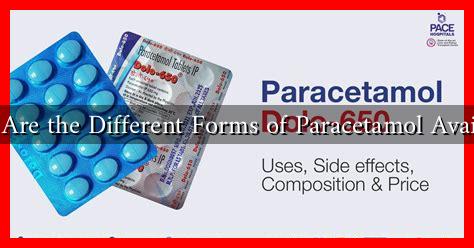-
Table of Contents
What Are the Different Forms of Paracetamol Available?
Paracetamol, also known as acetaminophen, is one of the most widely used medications globally for pain relief and fever reduction. Its popularity stems from its effectiveness and relatively low side effect profile compared to other analgesics. However, paracetamol is available in various forms, each suited for different needs and preferences. This article explores the different forms of paracetamol available, their uses, and considerations for choosing the right one.
Understanding Paracetamol
Paracetamol is classified as a non-opioid analgesic and antipyretic. It works by inhibiting the production of prostaglandins in the brain, which are chemicals responsible for pain and fever. According to the World Health Organization (WHO), paracetamol is an essential medicine, making it crucial for healthcare systems worldwide.
Forms of Paracetamol
Paracetamol is available in several forms, each designed to cater to different patient needs. Here are the most common forms:
- Tablets: Standard paracetamol tablets are the most common form. They typically come in 500 mg doses and are suitable for adults and children over 12 years old.
- Liquid Suspensions: Often used for children, liquid paracetamol is available in various flavors and concentrations, making it easier for younger patients to take.
- Effervescent Tablets: These dissolve in water, providing a faster onset of action. They are often preferred by those who have difficulty swallowing pills.
- Suppositories: Paracetamol suppositories are an alternative for patients who cannot take oral medications, such as infants or those with nausea.
- Injectable Forms: Paracetamol can be administered intravenously in hospital settings, particularly for patients who require rapid pain relief or cannot take oral medications.
- Extended-Release Formulations: These formulations provide prolonged pain relief and are typically used for chronic pain management.
Choosing the Right Form
When selecting a form of paracetamol, several factors should be considered:
- Age: Children require specific formulations, such as liquid suspensions or suppositories, while adults can typically use tablets or extended-release options.
- Medical Conditions: Patients with gastrointestinal issues may benefit from suppositories or liquid forms, while those with difficulty swallowing may prefer effervescent tablets.
- Onset of Action: For rapid relief, injectable forms or effervescent tablets may be more effective than standard tablets.
Case Studies and Statistics
According to a study published in the Journal of Pain Research, paracetamol is effective in managing postoperative pain, with intravenous formulations showing a significant reduction in pain scores compared to placebo. Additionally, a survey conducted by the National Health Service (NHS) found that 70% of patients preferred liquid formulations for children due to ease of administration.
Safety and Considerations
While paracetamol is generally safe when used as directed, it is essential to be aware of the potential for overdose, which can lead to severe liver damage. The maximum recommended dose for adults is typically 4,000 mg per day, but lower limits are advised for those with liver conditions or chronic alcohol use. Always consult a healthcare professional before starting any new medication.
Conclusion
Paracetamol remains a cornerstone in pain management and fever reduction due to its versatility and effectiveness. Understanding the different forms available—tablets, liquid suspensions, effervescent tablets, suppositories, injectable forms, and extended-release formulations—can help patients and caregivers make informed choices based on individual needs. Always prioritize safety by adhering to recommended dosages and consulting healthcare providers when necessary. With the right form of paracetamol, effective pain relief is within reach for everyone.

